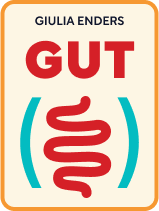

This article is an excerpt from the Shortform book guide to "Gut" by Giulia Enders. Shortform has the world's best summaries and analyses of books you should be reading.
Like this article? Sign up for a free trial here .
What are the three macronutrients? What is the function of each?
The building blocks of the food you eat are called macronutrients (macro- meaning “large”) because your body needs them in large quantities. Macronutrients fuel your body with energy and build important structures such as hormones, muscles, and DNA.
Keep reading for a better understanding of the three macronutrients’ roles in your health.
The 3 Macronutrients
What are the three macronutrients? They are carbohydrates, fat, and protein (amino acids). Your gut’s job is to break your food down into these tiny molecular components. Then it absorbs those molecules into the bloodstream and uses them to fuel your cells and store energy.
Let’s explore each macronutrient in detail.
Macronutrient #1: Carbohydrates
According to Enders, the first macronutrient is carbohydrates, which primarily serve as our short-term energy supply. They also form important structures in our body: This includes the molecules ribose and deoxyribose, which are the building blocks of RNA and DNA, respectively.
On a molecular level, Enders explains, carbohydrates consist of sugar molecule chains. Longer chains are harder for our body to break down and absorb into the bloodstream, whereas shorter chains are easier to digest and give us quick energy. Our gut prefers quick energy because digesting it saves time. This is why we crave carbs with short molecular chains, like sugary foods.
However, flooding the gut with quick energy has negative side effects. According to Enders, consuming too much refined sugar can cause us to gain weight because our bodies store this sugar as fatty tissue. The gut also has to work harder to stabilize itself after digesting refined sugar by producing hormones such as insulin.
On the other hand, Enders explains, eating carbohydrates with long sugar molecule chains (like brown rice, black beans, and vegetables) forces our gut to slow down, preventing spikes in blood sugar and creating healthy, short-term energy stores.
Macronutrient #2: Fat
Enders notes that our culture often portrays fat as something to avoid at all costs. But while too much fat can be detrimental to our health, we also need certain types of fat to function. Fat primarily serves as our long-term energy supply. It’s particularly suited to this job because it can store over twice the amount of energy as proteins and carbs.
According to Enders, fat also coats our nerves. (Shortform note: The fat-based substance that coats our nerves is called myelin. Without myelin to lubricate and protect them, our nerves couldn’t properly communicate with our brain and each other, leading to problems such as muscle spasms, severe pain, and vision impairment.)
Macronutrient #3: Proteins (Amino Acids)
Amino acids, the third macronutrient, are molecules that link together into complex chains known as proteins. According to Enders, proteins make up many structures in the body, including our DNA. She explains that during digestion, the gut breaks down the protein in our food into individual amino acids. The bloodstream then transports these amino acids to cells throughout the body, which reorganize them into structures such as muscle and skin.
The Connection Between Proteins and DNA
Enders’s claim that proteins are a building block of DNA is incorrect. DNA is made up of compounds called nucleotides, which contain deoxyribose (a sugar), a nitrogen base, and a phosphate.
However, DNA and proteins are closely related. In a process called protein synthesis, which happens in our cells, our DNA directs the construction of protein chains by telling the cell which amino acids to combine.
Cells combine amino acids in different sequences to create different proteins, depending on the cell’s function in our body. For example, our muscle cells combine amino acids into chains of the proteins actin and myosin, which form muscle fibers. Meanwhile, our skin cells form proteins such as keratin and collagen, which strengthen our skin.

———End of Preview———
Like what you just read? Read the rest of the world's best book summary and analysis of Giulia Enders's "Gut" at Shortform .
Here's what you'll find in our full Gut summary :
- How your digestive system works and why it’s important to keep it healthy
- How tiny organisms in your intestines influence your immune system (and possibly your mood)
- What your appendix actually does






